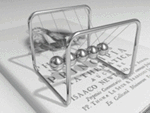Written by BJ:
It was some time in 1979 when one of the "big guys" showed me how to dial in that Fender or Music Man amps that always seemed to be on stage wherever you play: "Easy" he said. "It's the magic six". Volume to 6, Treble to 6, Middle to 3 and Bass to 2 (6, 6, and 3x2=6). Bright should be on, reverb set for two and master volume (if one) set so that you can be heard above the drums without drenching the vocals. "The rest of the knobs you can just ignore" because no one used tremolo in late 70's and the footswitch was always disappeared... The effect was almost like having the key to Holy Grail - I have to admit that he was right and I joined the Magical Six Choir.
It wasn't until years later, when I was absorbing schematics that I understood why there is magic in the six. In an amplifier with the topology input stage, tone control, volume control, voltage amplifier (tremolo- and reverb amplifier if fitted), phase splitter and output stage it is the first four controls that will set what is going to distort and how much.
The first stage runs essentially clean if nothing else but a guitar is connected. The voltage amplifier will hit the ceiling as volume is turned pass 4. The tone controls are placed before the volume control and will control what is being fed into it.
The purpose of the setting Treble=6, Middle=3 and Bass=2 is to:
1. Cut a bit of bass to get balance between high E-string and low E-string distortion. The bass-frequencies will have overtones far up in the midrange and may therefore build into disturbing high overtones that can make certain chords (D7) sound out of tune on the top three strings. Some amps will even oscillate when exposed to the combination of high amplification and lots of bass.
2. To control "The Mud Frequency 249,5Hz". Too much of this frequency and the tone will be muddy and too little and it will sound hollow and thin.
3. Cut some midrange (approx. 340Hz) to gain output power while keeping inter- modulation distortion at a minimum. Amplification factor will also be highest in the treble (above 2 kHz) and that is compensating the treble-loss of passive pickups. Open E-strings (high and low) played at the same time should now have approximately the same volume level with little more distortion on the top-string. Both strings should be clearly recognisable.
Inter-modulation distortion is a sort of mathematical distortion in that the sum and difference of two incoming frequencies are obtained as harmonics and will therefore build up so called "ghost notes" (these are notes that are not played and that are not in musical relation to the notes played). This can make certain chords sound dissonant as opposed to what we know as harmonic distortion where overtones follow the pattern of 2x, 3x, 4x.. in upper frequency, something that makes the probability of so called ghost notes being produced a lot lower.
The risk of inter-modulation distortion is quite high on Fender amps, mostly because of the working-points of the different stages. Ironically enough some of the modifications that were performed at the factory to reduce the total amount of distortion will, while reducing total distortion, rise the amount of 7th overtone, which is said to be the least pleasing of all.
4. Obtaining the correct treble response on most amplifiers made for guitar the treble-control does not work the same way as on your Hi-Fi, regulating the amount of treble. On guitar-amps the position of Treble-knob will very much affect to bass and midrange and it works more like a balance between bass and treble. In fact the tone stack system as used in most amplifiers is derived from a so called "Baxendall type" Hi-Fi circuit. Treble has been set to full while an isolation resistor often placed between the treble and bass controls is used to control treble (or actually tone balance between treble and bass). Balance is obtained when the treble pot is in it electrical center - that is between 5 and 7 depending on the taper on the pot. Final regulation of treble is best to be done with the bright-switch. The bright-switch seems to work best if the volume is set to between 5 and 7.
5. If the volume-control is set to 6, stage #2 will be fed from highest possible impedance and there will be certain current limitation. Stage #2 will also be fed with as much as it can take without getting some rather odd distortion as feedback through B+ tree that is appropriated as the true distortion generator is the stage #3 (reverb-mix amp). Where some peculiarities take place such as rectifier action between grid and cathode and glazing-spikes because of cathode decoupling etc...
6. And so 6, 6, 3, 2 (2x3=6) The Magical number 6.
The Fender "Magic Six" Amp Setup
Moderator: Moderators
3 posts
• Page 1 of 1
-

mrpicard - Posts: 306
- Images: 377
- Joined: Mon May 19, 2008 11:48 pm
- Location: Sydney, Australia
- pedals: 24
Re: The Fender "Magic Six" Amp Setup
Very Interesting....
I might have to try this some time today....
Thanks man!
I might have to try this some time today....
Thanks man!
-

Kinger - Posts: 14
- Joined: Mon Oct 19, 2009 1:34 am
- Location: Melbourne, Australia
- Guitars:: Fender Stratocaster, Gibson Les Paul Jr.
- amps: Fender Deluxe Reverb
- pedals: 6
Re: The Fender "Magic Six" Amp Setup
Will this work on all Fender tube amps???
- fcortex
- Posts: 40
- Joined: Fri Aug 08, 2008 10:33 pm
3 posts
• Page 1 of 1
Who is online
Users browsing this forum: No registered users and 1 guest
